The Lenovo ThinkPad X1 Yoga Review: OLED and LCD Tested
by Brett Howse & Brandon Chester on September 29, 2016 11:30 AM ESTDesign
The ThinkPad brand is well established, and Lenovo is not making any dramatic changes with aesthetics. They’ve focused on thin and light, and that is what the X1 Yoga provides. The notebook has a carbon fibre weave in the top lid, but all of the surfaces are the normal matte black finish of ThinkPads. It would be nice to see them offer a model with a metal finish, but the metal is on the inside with a magnesium alloy frame which Lenovo refers to as 'Super Mag'. It makes the laptop plenty sturdy despite the thin nature.
The hinge is a new design, allowing for a thinner and lighter hinge, and the hinge is metal for durability. For flip around convertibles like this, the hinge is very important to get right - too stiff will make for a difficult to open laptop, and too loose will mean that the screen will have excessive bounce when using it in a touch mode. Lenovo has hit a nice balance though, with a sturdy enough hinge for a bit less bounce. Being that it opens 360° degrees, it allows a quick switch between laptop mode, stand mode, tent mode, and tablet mode. The Yoga style hinge makes for a better laptop than the detachable notebooks, with the correct weight balance when using it as a laptop. They are also much quicker to transition into other modes than detachable models, and are my preferable choice for a 2-in-1.
ThinkPads are known for having a positive keyboard user experience, and despite the thin design they’ve not forgotten about this. Although there is not a lot of travel, the key feel is quite good, and there is nice resistance on the keys. The keyboard itself is a six-row model that is spill-resistant and backlit with white LEDs. As is typical of ThinkPads, the Fn key and Ctrl key are reversed compared to other brands, but they can be switched in the system BIOS if you prefer it the other way. The arrow keys are smaller than the others, but they are all the same size and not as bunched up together as some devices. They also include a Page Up and Page Down with the arrow keys, which is a nice design for a small laptop.
One of the interesting things that the ThinkPad Yogas do, including this new X1 Yoga, is to offer a lift-and-lock keyboard. When using the laptop in any of the touch modes, the keyboard surround lifts around the keys, locking them in place. It makes for a nice feel when using the device with touch, and prevents the floppy keys from distracting you when using it as a tablet. I’m not sure how much weight or cost that adds to the X1 Yoga, but it is completely worth it.
For pointer input, Lenovo keeps the traditional TrackPoint as well as a glass touchpad. The touchpad has a good feel, and works well enough. I prefer the TrackPoint though for extra precision and ease of use. The TrackPoint seems to be a love it or never use it affair, but for long-time customers of ThinkPads, I think it needs to be there so I’m glad they still include it. Although the TrackPoint buttons do limit the touchpad size, the trade-off is still a good one.
Lenovo has offered fingerprint readers for a long time on ThinkPads, but it’s nice to see them move from the swipe model to a capacitive touch version. It’s much easier to use, since you just drop your finger on it, and accuracy and speed have been excellent.
The other thing worth discussing is the stylus, called the ThinkPad Pen Pro. Not only does Lenovo offer a stylus which works natively with Windows 10’s inking input, they also offer their own WRITEit software which further enhances the stylus support. Windows 10’s default inking experience offers a text box at the bottom of the screen which you can use to write in, but the WRITEit software lets you just write directly in any text field. It also offers gestures like delete (by striking through text), insert, tab, and more.
The Stylus hardware is from Wacom, and it’s an Active Capacitive technology so it does not require a digitizer. It still offers 2048 levels of pressure sensitivity, and includes two buttons for left and right click, although they are pretty small. The pen is powered by a super-capacitor, and to get 100 minutes of use out of the pen only takes 15 seconds inside the charging dock. Palm rejection seems to work pretty well, and although the stylus is too small to be used for artistry, as a quick writing tool it works well.
The ThinkPad X1 Yoga’s design is an evolution of the ThinkPads before it, which seems to be exactly what they were aiming for. The thin and light design is still strong, and they keyboard is very good for such a thin laptop. Lenovo has done a good job of minimizing the display bezels, but keeping enough bezel to make it usable as a tablet, and the Yoga hinge is still one of the best 2-in-1 designs on the market.


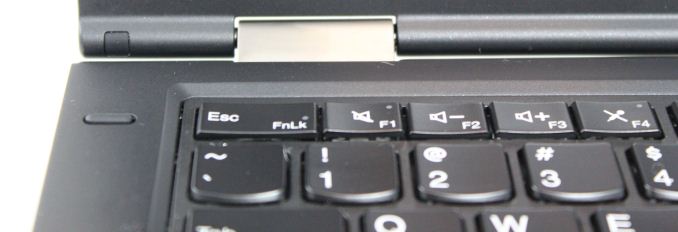
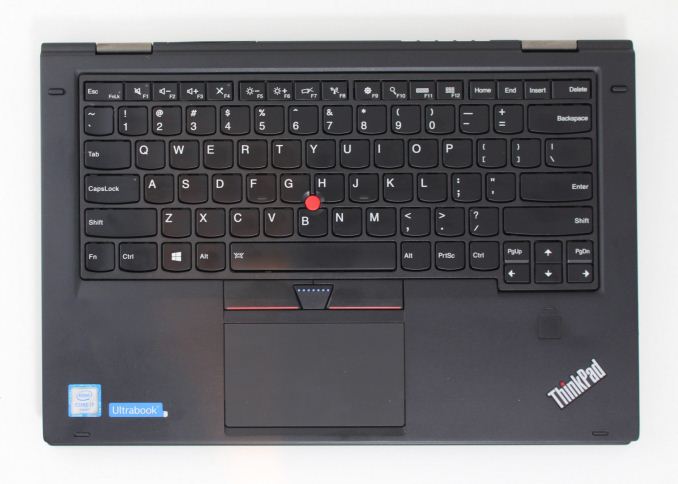
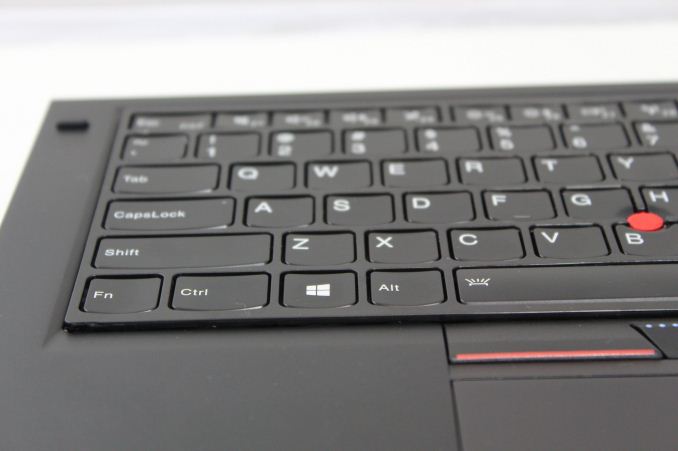
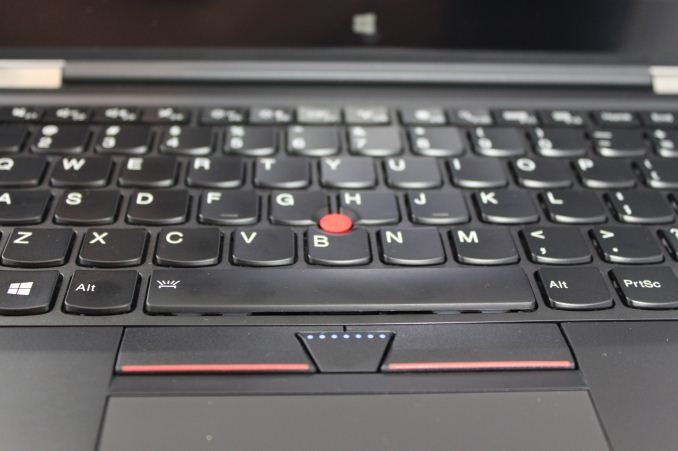
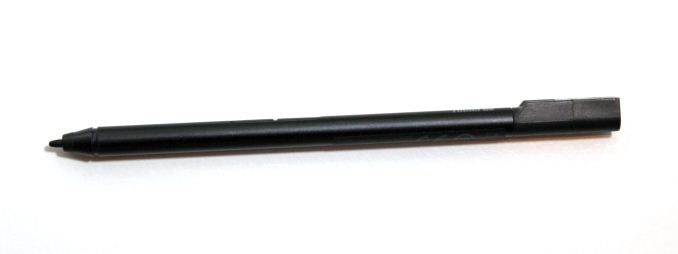








84 Comments
View All Comments
overzealot - Wednesday, October 5, 2016 - link
Awesome, thanks Brett!ikjadoon - Friday, September 30, 2016 - link
I think there's a little error on battery capacity. IIRC, the OLED version actually uses a 56Wh battery, while the LCD uses 52Wh.http://www.notebookcheck.net/Lenovo-ThinkPad-X1-Yo...
So, then, the battery life for the OLED is actually even worse. :(
Lolimaster - Friday, September 30, 2016 - link
Not even my 7 years old Cowon S9 pmp shows that type of ghosting on his amoled display (pretty much zero ghosting).FXi - Saturday, October 1, 2016 - link
Interesting cross product implications from this review. Btw a very detailed review which is needed in this new type of product, kudos for not just glossing through the details but taking it head on.I note that power draw (with light screens which we knew about but good to note) being so much higher may well be a challenge to Apple going OLED. That may well cause them to implement a dark interface.
I bet Windows 10 with it's continuous approach to a dark interface may be ready for the move to OLED in more device types - though even using it you still had a severe drop in battery life.
If the gamut (which is going to be a big deal moving forward a couple years as 4k content all goes to wide gamut) had been wide on the LCD too, it would have been a fairer contrast. Wide gamut backlights on LCD's draw more power so then the comparison would have been more like to like in capability.
Often overlooked is that Nvidia (and possibly others but NV is the ones who discussed it) has for years made 10 bit wide gamut color accessible through DirectX which has supported wide gamut where the receiver (panel) could understand it. Now that would then need another culling of any actual games that have a wide gamut setting (even if invisible to the user) that activates on a wide gamut monitor, but be aware that taking advantage of wide gamut may not be restricted to just Adobe type programs. In fact the Nvidia driver has a checkbox for outputting 10 bit by force. This isn't color managed, but it begins to bridge the gap in the triple match you need of software/interface/hardware that would need to be aligned for high gamut impact.
If you'd tried a 4k HDR stream play on these devices I suspect you'd be pretty impressed at the differences.
Awesome job detecting the blur. That relates the the draw and hold driving of current panels that creates blur from the driving circuit in spite of OLED pixel draws. Yes it needs both hardware and driver level software to fix. Black frame insertion is the way to trick the brain and represents one first approach to curing this artifact. But it will come as no shock to you that the driver circuits in small devices are weak vs desktop or TV, but also that any special way of doing things now new to OLED and different from LCD is the weakest area of all. Very few houses make these kinds of chips needed for TV, fewer that can then be integrated for desktop and for mobile of laptop size, almost none. So it's going to take time and expansion of the entire market to drive new solutions as available.
Well done :)
cditty - Tuesday, October 4, 2016 - link
Easier for Apple to do OLED on the smaller screen. I'm really glad I read this article. The ghosting would have driven me crazy. I've used the FHD version of this laptop and liked it a lot (fingerprint login in particular). Makes sense to me why Apple is supposedly only using OLED on the Macbook Pro for a smaller touchpad. They won't trade off battery life. With processor and SSD technology constant now, it seems like the display (on a laptop) is the next battle point. I'm still relatively happy on a 5.5 inch phone with a 1080 screen. It's worth the extra battery life to me. A killer, accurate 1080 screen is better (to me) than a Q or UHD screen that kills the battery.I apologize for my 'all over the place' intermingling of phone and laptop discussion.
Erin Adreno - Sunday, October 2, 2016 - link
The nvme ssd speed doesn't seem right. That speed should come from a 950 pro instead of pm951.cptcolo - Saturday, November 12, 2016 - link
I am pretty sure it is a PM961 not a PM951cptcolo - Saturday, November 12, 2016 - link
I took apart mine, it indeed has a Samsung PM961 1TB SSD. I ordered mine back in June 2016.Ro_Ja - Monday, October 3, 2016 - link
It's also a good thing this laptop has the RAM in dual-channel mode. It greatly affects performance for onboard GPUs.amosbatto - Wednesday, October 5, 2016 - link
Let's talk about the longevity of this device. How hard is it to open the case and replace the parts? You didn't even bother to mention in the review that the battery is sealed in the case, which is very important when it dies after 2 years of use. Is it soldered or glued inside, or is it designed to be replaced? Is the keyboard a user replaceable part? Is the RAM soldered on the motherboard? Does the SSD use a standard connector? This is the essential information that determines whether a laptop lasts 5 years or 2 years and it is never included in any review.I just bought a Thinkpad T450s and I replaced the screen and added more RAM. The lid of the T450s is too thin to protect the screen in a fall in my opinion. The case is extremely hard to open without a plastic spudger and I marred the plastic because I only had a flat-head screw driver. Reviews used to open up laptops, but now we seem to live in a world where every device is designed for planned obsolescence.
These are important questions because the fabrication of a new laptop emits between 200 and 400 kg of CO2-equivalent. Between 60%-80% of the total energy of a laptop lies in its initial fabrication and the majority of its greenhouse gas emissions and other types of pollution are also caused by the fabrication. The best way to reduce the environmental impact is to use a device as long as possible and avoid new fabrication. I would appreciate reviews which at least give me some idea of the longevity of a device.
Another think that I would appreciate is some mention of the environmental hazards of its contents. Does it use PVC plastic and phthalates? Does it contain brominated flame retardants in the casing and motherboard? Does the screen contain arsenic? Does the manufacturer have a take-back policy, so the device can be easily recycled? For me, these are far more important questions when I buy a laptop than whether this device scores 5% better on some CPU test. I will never notice the incremental difference in the speed of the CPU, but I care whether I am being exposed to chemicals that may effect my hormones and could give my child a birth defect. Why do review sites like Anandtech never talk about whether the power cord on a laptop contains phthalates or not?